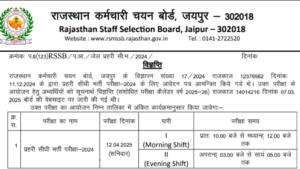In the realm of agriculture, where crop improvement holds paramount importance, pure-line selection stands as a cornerstone of plant breeding. This meticulous method, pioneered by Danish botanist Wilhelm Johannsen in the early 20th century, has revolutionized the development of superior crop varieties, enhancing yields, improving nutritional value, and bolstering resilience against pests and diseases.
Defining Pure-Line Selection: A Path to Genetic Homogeneity
Pure-line selection is a systematic breeding technique involving the selection and propagation of individual plants with desirable traits over multiple generations. This process, repeated over several generations, gradually eliminates genetic variation within the population, leading to the establishment of a genetically homogenous line of plants. These pure lines possess consistent and predictable characteristics, making them ideal for crop improvement programs.
Pure-Line Selection in Plant Breeding: A Journey of Refinement
Pure-line selection has played a pivotal role in developing numerous high-yielding and disease-resistant crop varieties. By selecting for specific traits, such as increased grain size, enhanced pest resistance, or improved nutritional content, breeders have created crop lines that meet the ever-growing demands of modern agriculture.
Characteristics of Pure-Line Selection: A Mark of Distinction
Pure lines exhibit several defining characteristics that distinguish them from other plant populations:
- Genetic Homogeneity: Pure lines possess a uniform genetic makeup, resulting in consistent and predictable traits across generations.
- Heritability: The traits of pure lines are highly heritable, meaning they are passed down from parents to offspring with high accuracy.
- Stability: Pure lines exhibit remarkable stability, maintaining their desirable traits even in varying environmental conditions.
Pure-Line Selection in Self-Pollinated Crops: A Perfect Fit
Pure-line selection is particularly effective for self-pollinated crops, such as wheat, rice, and beans. In self-pollinated crops, the flowers of an individual plant are fertilized by its own pollen, resulting in offspring that are genetically very similar to their parents. This makes self-pollinated crops well-suited for pure-line selection, as the desired traits can be quickly and efficiently passed down from generation to generation.
The Pure-Line Selection Process
The pure-line selection process involves the following steps:
- Selection: A large number of individual plants within a population are selected based on their desirable traits.
- Propagation: The selected plants are grown separately and their seeds are collected.
- Evaluation: The offspring of the selected plants are grown and evaluated for their expression of the desired traits.
- Selection and Propagation: The process of selection and propagation is repeated for several generations until a pure line is established.
Pure-Line Selection Example: Unraveling the Wheat Enigma
One of the most well-known examples of pure-line selection is Johannsen’s work with the common bean (Phaseolus vulgaris). In his experiments, Johannsen observed that individual bean plants within a population exhibited a range of seed weights, a trait influenced by both genetic and environmental factors. To investigate the genetic component of seed weight, Johannsen selected and propagated individual plants with the desired seed weight over several generations.
Johannsen’s results showed that the seed weight of the selected plants remained consistent across generations, even when grown under different environmental conditions. This indicated that the trait of seed weight was largely determined by the plant’s genetic makeup. By selecting for this trait over multiple generations, Johannsen established pure lines of beans with consistent seed weights.
Conclusion
Pure-line selection demonstrates the power of creating genetically homogenous lines with desirable traits. Johannsen’s work laid the foundation for applying pure-line selection to other self-pollinated crops, leading to the development of numerous high-yielding and disease-resistant varieties. As agriculture continues to evolve, pure-line selection remains a fundamental tool for plant breeders, driving progress towards more resilient and productive crop systems.




 Rajasthan Jail Prahari Admit Card 2025 a...
Rajasthan Jail Prahari Admit Card 2025 a...
 Odisha High Court ASO Exam Date 2025 Out...
Odisha High Court ASO Exam Date 2025 Out...
 AIIMS NORCET 8 Result 2025 Out, Download...
AIIMS NORCET 8 Result 2025 Out, Download...


 Adda247 Job portal has complete information about all Sarkari Jobs and Naukri Alerts, its latest recruitment notifications, from all state and national level jobs and their updates.
Adda247 Job portal has complete information about all Sarkari Jobs and Naukri Alerts, its latest recruitment notifications, from all state and national level jobs and their updates.